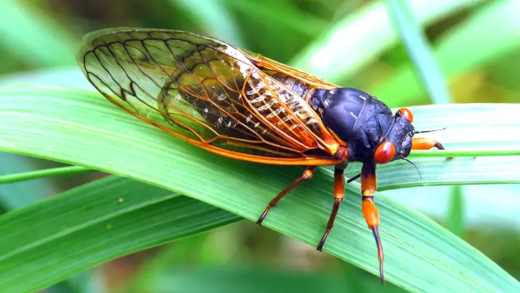Improving soil quality is vital for healthy plant growth. Use organic matter, test soil, and avoid chemicals. Companion planting enhances growth, deters pests, and maximizes space. Extending the growing season with row covers, choosing varieties wisely, and using cold frames leads to longer harvests.
How to Plant Seeds Effectively
Gardening tips for planting seeds are crucial for ensuring healthy growth. The first step is to choose the right seeds for your climate and soil type. Consider factors such as sunlight, moisture, and temperature when selecting seeds.
- Prepare the soil: Loosen the soil with a garden fork or tiller. Remove any weeds or debris to create a clean planting area.
- Plant at the right depth: Each seed type has a recommended planting depth. Generally, smaller seeds should be planted shallower than larger ones.
- Water gently: After planting, water the seeds lightly to avoid displacing them. A fine spray or watering can is ideal.
- Label your plants: Use markers to remember which seeds you planted where. This helps with care and maintenance.
Following these steps will lead to a more successful garden. Monitor your seeds as they sprout, and be ready to thin them out if they are too crowded.
Optimal Watering Schedule
Understanding the optimal watering schedule for plants is essential in gardening. Over-watering can drown plants, while under-watering can cause them to wilt.
- Check soil moisture: Before watering, stick your finger into the soil. If it feels dry an inch down, it’s time to water.
- Water early or late: Aim to water your garden in the early morning or late afternoon to minimize evaporation.
- Use mulch: Applying a layer of mulch can help retain moisture in the soil.
By adhering to a consistent watering schedule, you can significantly improve your plants’ health and growth.
Choosing the Right Fertilizers
Discovering the best fertilizers for different plants can greatly enhance their growth. Fertilizers provide essential nutrients that plants need to thrive.
- Nitrogen-rich fertilizers: Ideal for leafy greens, these fertilizers promote healthy foliage.
- Phosphorus fertilizers: Best for flowering plants, they encourage blooming and root development.
- Potassium fertilizers: These help with overall plant health and resistance to disease.
Reading the labels on fertilizers can help you choose the right one for your specific plants. Always follow the recommended application rates to avoid damaging your plants.
Identifying and Managing Pests
Finding out how to identify and manage garden pests is a key aspect of successful gardening. Pests can harm plants and reduce yields, so early detection is crucial.
- Regular inspections: Check your plants regularly for signs of pests, such as holes in leaves or sticky residue.
- Natural remedies: Consider using insecticidal soap or neem oil to control pests without harming beneficial insects.
- Encourage beneficial insects: Attract ladybugs and lacewings, which prey on harmful pests.
By staying vigilant and proactive in pest management, you can protect your garden and ensure a healthy harvest.
Pruning Tips for Healthy Growth
Pruning tips are essential for maintaining healthy plants. Regular pruning encourages growth and helps to shape your plants. Here are some effective strategies:
- Timing is key: Prune during the plant’s dormant season, typically late winter or early spring, to promote new growth.
- Use sharp tools: Ensure your pruning shears are clean and sharp to make clean cuts, reducing the risk of disease.
- Focus on dead or diseased branches: Remove any dead, damaged, or diseased wood to encourage healthy growth and airflow.
- Thin out crowded areas: If branches are too close together, remove some to allow light and air to penetrate.
Pruning not only improves the appearance of your plants but also enhances their overall health. Remember to step back and assess your work to maintain a natural shape.
Selecting Plants for Your Climate
Choosing plants that thrive in your specific climate and soil conditions is crucial for a successful garden. Here’s how to make the best selections:
- Research your hardiness zone: Know your USDA hardiness zone, which indicates the temperature extremes in your area.
- Consider soil type: Test your soil to determine its pH and nutrient levels. Some plants prefer sandy soil, while others thrive in clay or loamy soil.
- Choose native plants: Native plants are adapted to local conditions and typically require less maintenance.
- Look for drought-resistant varieties: If water conservation is a concern, select plants that can tolerate dry conditions.
By selecting the right plants for your climate, you’ll create a more resilient garden that thrives with minimal effort.
Essential Gardening Tools
Having the right gardening tools is fundamental for effective garden maintenance. Here’s a list of must-have tools:
- Hand trowel: Perfect for digging small holes, transplanting seedlings, and removing weeds.
- Pruning shears: Essential for trimming and shaping plants, making clean cuts that promote growth.
- Garden fork: Useful for turning soil and breaking up compacted earth, improving aeration.
- Watering can: Ideal for gentle watering, especially for seedlings and delicate plants.
- Gloves: Protect your hands from thorns and dirt while providing a better grip on tools.
Investing in quality tools will not only make your gardening tasks easier but also enhance your overall gardening experience. Regular maintenance of your tools will ensure their longevity and effectiveness.
Improving Soil Quality
Improving soil quality is vital for ensuring healthy plant growth. Healthy soil provides essential nutrients, retains moisture, and supports beneficial microorganisms. Here are some effective ways to enhance your soil:
- Test your soil: Conduct a soil test to determine pH levels and nutrient content. This information will help you make informed amendments.
- Add organic matter: Incorporate compost or well-rotted manure to improve soil structure and nutrient availability. Organic matter enhances the soil’s ability to retain moisture.
- Use cover crops: Planting cover crops, like clover or rye, can prevent erosion and add nutrients back into the soil when tilled under.
- Avoid chemical fertilizers: Instead of relying on synthetic fertilizers, which can degrade soil health, opt for organic options that nourish the soil ecosystem.
By focusing on improving soil quality, you’ll create a thriving environment for your plants, leading to better growth and increased yields.
Benefits of Companion Planting
Companion planting offers numerous advantages for gardeners. By strategically placing plants together, you can enhance growth, deter pests, and improve overall garden health. Here are some key benefits:
- Pest control: Certain plants repel pests naturally. For example, marigolds deter nematodes and other harmful insects.
- Improved growth: Some plants, like beans, can fix nitrogen in the soil, benefiting nearby plants like corn that require this nutrient.
- Space efficiency: Companion planting maximizes space by allowing plants to grow together, utilizing vertical and horizontal space effectively.
- Enhanced flavor: Studies suggest that some companion plants can improve the flavor of others. For instance, planting basil with tomatoes can enhance the taste of both.
Implementing companion planting strategies in your garden can lead to healthier plants and a more productive garden.
Extending the Growing Season
Extending the growing season is essential for maximizing your gardening efforts. With a few strategies, you can enjoy fresh produce for a longer period. Consider these tips:
- Use row covers: Lightweight fabric row covers can protect plants from frost and extend the growing season by maintaining warmth.
- Choose early and late varieties: Opt for plant varieties that mature early or late in the season to maximize your harvest time.
- Implement cold frames: Building cold frames can provide a sheltered environment for plants, allowing you to start seedlings earlier in spring and continue growing into fall.
- Utilize greenhouse techniques: If feasible, consider using a greenhouse to control temperature and extend the growing season significantly.
With these strategies, you can successfully extend your growing season and enjoy a bountiful harvest for months.





Comments are closed.